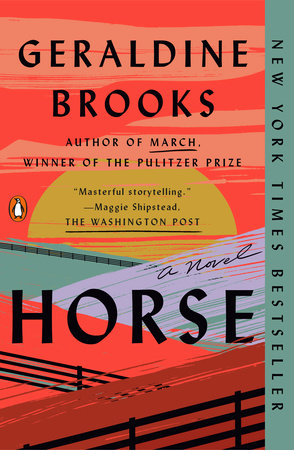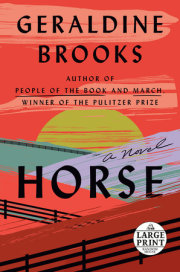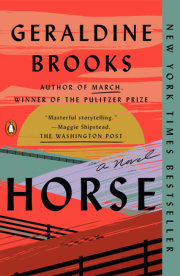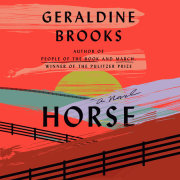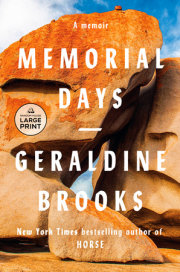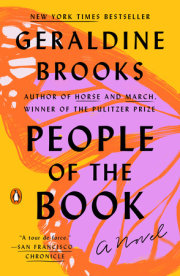THEO
Georgetown, Washington, DC
2019
The deceptively reductive forms of the artist's work belie the density of meaning forged by a bifurcated existence. These glyphs and ideograms signal to us from the crossroads: freedom and slavery, White and Black, rural and urban.
No. Nup. That wouldn't do. It reeked of PhD. This was meant to be read by normal people.
Theo pressed the delete key and watched the letters march backward to oblivion. All that was left was the blinking cursor, tapping like an impatient finger. He sighed and looked away from its importuning. Through the window above his desk, he noticed that the elderly woman who lived in the shabby row house directly across the street was dragging a bench press to the curb. As the metal legs screeched across the pavement, Clancy raised a startled head and jumped up, putting his front paws on the desk beside Theo's laptop. His immense ears, like radar dishes, twitched toward the noise. Together, Theo and the dog watched as she shoved the bench into the teetering ziggurat she'd assembled. Propped against it, a hand-lettered sign: FREE STUFF.
Theo wondered why she hadn't had a yard sale. Someone would've paid for that bench press. Or even the faux-Moroccan footstool. When she brought out an armful of men's clothing, it occurred to Theo that all the items in the pile must be her dead husband's things. Perhaps she just wanted to purge the house of every trace of him.
Theo could only speculate, since he didn't really know her. She was the kind of thin-lipped, monosyllabic neighbor who didn't invite pleasantries, much less intimacies. And her husband had made clear, through his body language, what he thought about having a Black man living nearby. When Theo moved into Georgetown University's graduate housing complex a few months earlier, he'd made a point of greeting the neighbors. Most responded with a friendly smile. But the guy across the street hadn't even made eye contact. The only time Theo had heard his voice was when it was raised, yelling at his wife.
It was a week since the ambulance had come in the night. Like most city dwellers, Theo could sleep right through a siren that Dopplered away, but this one had hiccuped to sudden silence. Theo jolted awake to spinning lights bathing his walls in a wash of blue and red. He jumped out of bed, ready to help if he could. But in the end, he and Clancy just stood and watched as the EMTs brought out the body bag, turned the lights off, and drove silently away.
At his grandmother's house in Lagos, any death in the neighborhood caused a flurry in the kitchen. As a kid visiting on school holidays, he'd often been tasked with delivering the steaming platters of food to the bereaved. So he made a stew the next day, wrote a condolence card, and carried it across the street. When no one answered the door, he left it on the stoop. An hour later, he found it back on his own doorstep with a terse note: Thanks but I don't like chicken. Theo looked down at Clancy and shrugged. "I thought everyone liked chicken." They ate it themselves. It was delicious, infused with the complex flavors of grilled peppers and his homemade, slow-simmered stock. Not that Clancy, the kelpie, cared about that. In the no-nonsense insouciance of his hardy breed, he'd eat anything.
The thought of that casserole made Theo's mouth water. He glanced at the clock in the corner of his laptop. Four p.m. Too early to quit. As he started typing, Clancy circled under the desk and flopped back down across his instep.
These arresting compelling images are the only known surviving works created by an artist born into slavery enslaved. Vernacular, yet eloquent, they become semaphores from a world convulsed. Living Surviving through the Civil War, forsaking escaping the tyranny of the plantation for a marginalized life in the city, the artist seems compelled to bear witness to his own reality, paradoxically exigent yet rich.
Awful. It still read like a college paper, not a magazine article.
He flipped through the images on his desk. The artist confidently depicted what he knew-the crowded, vibrant world of nineteenth-century Black domestic life. He had to keep the text as simple and direct as the images.
Bill Traylor, born enslaved, has left us the only
A movement across the street drew his eye up from the screen. The neighbor was trying to move an overstuffed recliner. It was teetering on its side on the top step as she struggled to keep a grip on it.
She could use help. He did a quick personal inventory: Shorts on, check. T-shirt, check. Working in his un-air-conditioned apartment, Theo would sometimes spend the whole day in his underwear, forgetting all about his dŽshabillement until confronted by the quizzical gaze of the FedEx guy.
He reached the other side of the street just as gravity won, prising the chair from her grip. He jumped up the step and body-blocked it. Her only acknowledgment was a grunt and a quick lift of her chin. She bent down and grabbed the underside of the chair. Theo hefted an armrest. Together, crabwise, they shuffled to the curb.
The woman straightened, pushing back her thin, straw-colored hair, and rubbing her fists into the small of her back. She waved an arm at the ziggurat. "Anything you want . . ." Then she turned and ascended the steps.
Theo couldn't imagine wanting anything in this sadness-infused pile of discards. His apartment was sparsely furnished: a midcentury-modern desk and a Nelson sofa acquired at a thrift store. The rest of the available space was filled mostly with art books, shelved on scavenged planks and milk crates he'd spray-painted matte black.
But Theo, the son of two diplomats, had been raised by the commandment that bad manners were a mortal sin. He had to at least pretend to look. There were some old paperbacks stuffed into a beer carton. He was always curious about what people read. He reached down to check the titles.
And that was when he saw the horse.
JESS
Smithsonian Museum Support Center, Maryland
2019
Jess was seven when she dug up the dog. He'd been dead a year. She and her mum had buried him with ceremony, under the flowering red gum in the backyard, and they'd both cried.
Her mother wanted to cry again when Jess requested large Tupperware containers for the bones she'd just exhumed. Generally, Jess's mother was the kind of parent who would let her daughter set the house on fire if she thought it could teach something about carbon and oxygen. But she was stricken with a stab of anxiety: was digging up a beloved pet and macerating its corpse a sign that your child had psychopathic tendencies?
Jess tried her best to explain that she'd dug up Milo because she loved him, and that's why she had to see what his skeleton looked like. Beautiful, as she knew it would be: the swoop of the rib cage, the scoop of the eye sockets.
Jess loved the interior architecture of living things. Ribs, the protective embrace of them, how they hold delicate organisms in a lifelong hug. Eye sockets: no artisan had ever made a more elegant container for a precious thing. Milo's eyes had been the color of smoky quartz. When Jess touched a finger to the declivities on either side of his delicate skull, she could see those eyes again: the kind gaze of her earliest friend, avid for the next game.
She grew up on one of the dense streets of liver-brick bungalows that marched westward with Sydney's first growth spurt in the 1900s. Had she lived in a rural place, she might have exercised her fascination on road-killed kangaroos, wombats, or wallabies. But in inner Sydney, she was lucky to find a dead mouse, or perhaps a bird that flew into a plate-glass window. Her best specimen was a fruit bat that had been electrocuted. She found it on the nature strip under the power lines. She spent a week articulating it: the papery membrane of the wing, unfolding like the pleated bellows of an accordion. The metatarsal bones, like human fingers, but lighter-evolved not to hold and grasp, but to fan the air. When she was done, she suspended it from the light fixture in her bedroom ceiling. There, stripped clean of all that could readily decay, she watched it fly forever through endless nights.
Over time, her bedroom became a mini natural history museum, filled with skeletons of lizards, mice, birds, displayed on plinths fashioned from salvaged wire spools or cotton reels, and identified with carefully inked Latin tags. This did not endear her to the tribe of teenage girls who inhabited her high school. Most of her classmates found her obsession with necrotic matter gross and creepy. She became a solitary teen, which perhaps accounted for her high place in the state in three subjects when the final public exam results were published. She continued to distinguish herself as an undergrad and came to Washington on a scholarship to do her master's in zoology.
It was the kind of thing Australians liked to do: a year or two abroad to take a look at the rest of the world. In her first semester, the Smithsonian hired her as an intern. When they learned she knew how to scrape bones, she was sent to do osteo prep at the Museum of Natural History. It turned out that she had become extremely skilled from working on small species. A blue whale skeleton might impress the public, but Jess and her colleagues knew that a blue wren was far more challenging to articulate.
She loved the term "articulate" because it was so apt: a really good mount allowed a species to tell its own story, to say what it was like when it breathed and ran, dived or soared. Sometimes, she wished she'd lived in the Victorian era, when craftsmen competed to be the best at capturing movement-a horse rearing required an absolute balance in the armature, a donkey turned to scratch its flank demanded a sculptor's sense of curvature. Making these mounts had become a craze among wealthy men of the time, who strove to produce specimens dedicated to beauty and artistry.
Contemporary museums had scant place for that. Mounting bones destroyed information-adding metal, removing tissue-so very few skeletons were articulated. Most bones were prepped, numbered, and then stored away in drawers for comparative measurement or DNA sampling.
When Jess did that work, her nostalgia for the craftsmanship of the past faded, overtaken by her fascination with the science. Every fragment told a story. It was her job to decode them and help scientists extract the testimony from each fossilized chip. The specimens might have come to the museum as the product of dumb luck or the result of days of exacting scientific endeavor. A hobbyist might have stumbled upon a mammoth's tibia uncovered by the lashings of a winter storm. Or a paleontologist might have collected a tiny vole's tooth after weeks of painstaking soil sifting. Jess made her labels on a laser printer and included GPS coordinates for where the specimen had been found. Past curators left a more personal mark, their handwritten cards in sepia-toned ink.
Those nineteenth-century preparators had plied their craft ignorant of DNA and all the vital data it would one day yield. It thrilled Jess to think that when she closed the drawer on a newly filed specimen, it might be opened in fifty or a hundred years by a scientist seeking answers to questions she didn't yet know how to ask, using tools of analysis she couldn't even yet imagine.
She hadn't meant to stay in America. But careers can be as accidental as car wrecks. Just as she graduated, the Smithsonian offered her a four-month contract to go to French Guiana to collect rainforest specimens. Not many girls from Burwood Road in western Sydney got to go to French Guiana and bounce through the rainforest with scorpion specimens pegged across the jeep like so much drying laundry. Another offer followed: Kenya, to compare contemporary species on Mount Kilimanjaro with those gathered by Teddy Roosevelt's expedition a hundred years earlier.
At the end of that trip, Jess was packing her few possessions, ready to go home to get on with what she still considered her real life, when the Smithsonian offered her a permanent position, managing their vertebrate Osteology Prep Lab at the Museum Support Center in Maryland. It was a brand-new facility and the job vacancy was unexpected. The manager who had designed the lab had been struck down by a sudden allergy to frass, the soft, dusty excrement of dermestid beetles. Those beetles were the preferred and best means of bone cleaning, so being unable to work with them without breaking into hives signaled the need for a change of occupation.
The Smithsonian's nickname was "the Attic of America." Support was the attic's attic: a sprawling twelve miles of storage that housed priceless scientific and artistic collections. Jess had thought she wouldn't want to work out in the suburbs, far from the public face of the museum. But when she walked down the vast connecting corridor known as "the street," linking the zigzag of metal-sheathed, climate-controlled buildings in which all kinds of science took place, she knew she'd arrived at the epicenter of her profession.
After her interview she and the director walked across a verdant campus flanked by the botany department's greenhouses. He pointed out a newly built storage pod, looming windowless above the greenhouses. "We just opened that one, to house the wet collection," he said. "After 9/11, we realized it wasn't prudent to have twenty-five million biological specimens in combustible fluids crammed in a basement a couple of blocks from the Capitol. So now they're here."
The Osteo Prep Lab was farther on, in a building of its own, tucked off at the edge of the campus nearest the highway. "If you get, say, an elephant carcass from the National Zoo, it's pungent," the director explained, "so we sited your lab as far from everyone else as possible."
Your lab. Jess hadn't thought of herself as ambitious, but she realized she badly wanted this responsibility. Inside, the lab gleamed: a necropsy suite with a hydraulic table, a two-ton hoist, double bay doors large enough to admit a whale carcass, and a wall of saws and knives worthy of a horror movie. It was the largest facility of its kind in the world, and a far cry from her makeshift lab in the laundry room on Burwood Road.
She loved working there. Every day brought something new in a flow of specimens that never stopped. The latest arrival: a collection of passerines from Kandahar. The birds had been roughed out in the field, most of the feathers and flesh removed. Jess's assistant, Maisy, was bent over the box of little bundles, carefully tied so none of the tiny bones would be lost.
Copyright © 2022 by Geraldine Brooks. All rights reserved. No part of this excerpt may be reproduced or reprinted without permission in writing from the publisher.

